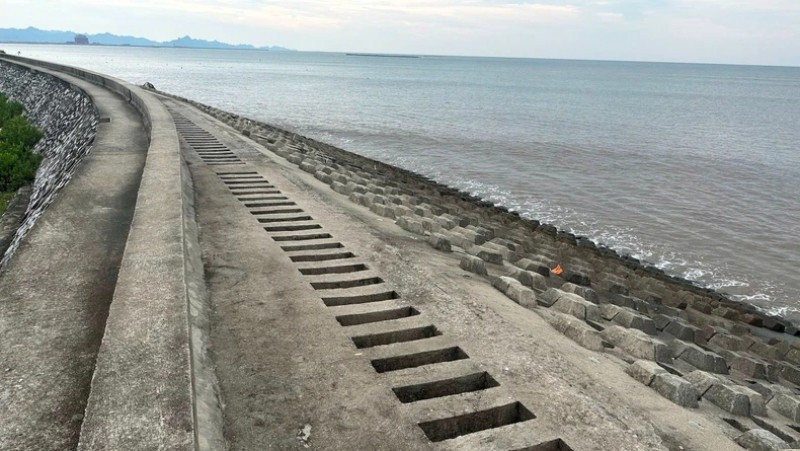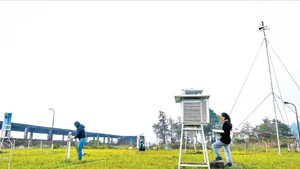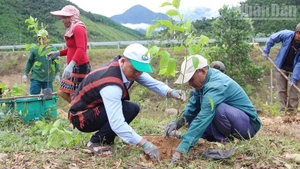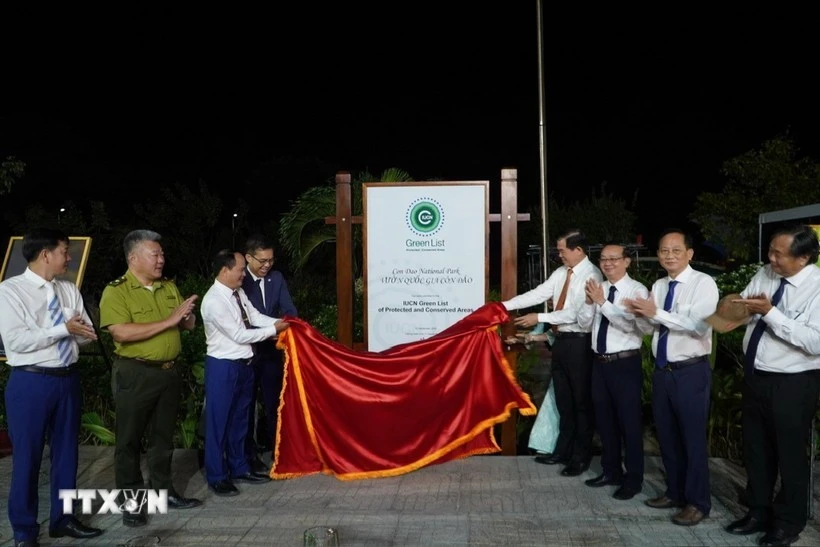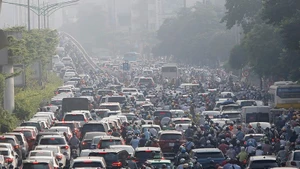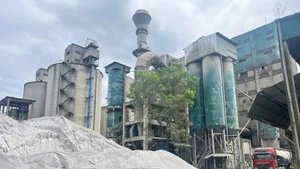As the national economy continues to grow in scale, awareness of the importance of the dyke system must also be elevated accordingly.
Accelerating dyke upgrades and repairs
To ensure safety and flood resistance of dyke routes, especially ahead of the 2025 rainy season, localities across the country have been actively preparing manpower, materials, equipment, and response plans for dyke protection. Strict patrolling and surveillance have been being enforced to promptly detect and handle incidents in the early stages. Inspections and damage assessments are conducted regularly to ensure timely repairs after storms and floods.
Tran Cong Tuyen, Head of Dyke Management at the Department of Dyke Management and Natural Disaster Prevention, stressed the need for a dual approach combining both structural and non-structural solutions. On the structural side, priority must be given to investing in the reinforcement and upgrading of dykes in line with planning and design standards. Key focus areas include eliminating vulnerable points, strengthening weak dyke sections, and ensuring short- and long-term flood prevention. At the same time, strict enforcement is required to curb violations such as encroachment on dyke bodies, protected corridors, flood storage areas, and the use of overweight vehicles on dykes, which threaten dyke safety.
Equally important are non-structural measures such as the application of science and technology in dyke construction and management. In addition, raising awareness and knowledge among local authorities, communities, and socio-political organisations is essential to promoting active participation in dyke protection and emergency response. Comprehensive flood prevention strategies must also be researched and implemented alongside dyke systems to meet safety standards.
According to the Thanh Hoa Provincial Project Management Unit for Agricultural and Rural Development Works, as of now, around 11 kilometres of the left and right Len dykes in the districts of Ha Trung, Nga Son, and Hau Loc are under construction. About 9.5 kilometres of these have reached flood-resistant elevation; 6 kilometres of wave-blocking walls and 4 kilometres of concrete dyke surfaces have been completed.
However, material shortages, especially in rock and sand, combined with rising prices have negatively affected construction progress. Furthermore, about 700 metres of the right Len dyke in the communes of Cau Loc and Quang Loc (Hau Loc District) have yet to be handed over to contractors due to land clearance delays. The project management unit has been coordinating with the Hau Loc District Land Clearance Council to finalise compensation procedures and hand over the site as planned.
In Hai Duong Province, Director of the Provincial Irrigation Department Do Tien Bac outlined several persistent issues. With 19 dyke routes totaling 373.286 kilometres, 86 embankments, and 276 culverts, the province faces funding limitations for annual upgrades. Many vulnerable sections remain unsafe against design flood levels; cross-sections are incomplete and flood-response traffic along dykes remains difficult, and riverbank erosion is worsening. Several embankments have shifted or collapsed, while aging culverts, many short and steep, have been repeatedly patched or extended, drastically reducing their flood-resilience.
Innovative and breakthrough solutions urgently needed
As a result of climate change, what were once considered unusually intense storms have now become the norm, appearing with increasing frequency. Forecasts suggest that powerful storms like Yagi (in 2024) will continue to occur. The threat of heavy rainfall, major flooding, and even extreme floods is very real, with the possibility of storms and floods exceeding current design capacity.
Tran Cong Tuyen, Head of Dyke Management at the Department of Dyke Management and Natural Disaster Prevention, said the coastal dikes currently being upgraded under the Coastal Dike Upgrade Programme are only designed to withstand category 9–10 storms and average tidal levels of 5%. Particularly concerning is the condition of dike systems from grade III and above, where approximately 300 critical weak points remain; 269.7 kilometres of dikes are below the required elevation; 298.8 kilometres are narrow and fragmented; 184.6 kilometres are prone to piping and seepage during floods; 354 sluices and 223.1 kilometres of embankments are damaged. These issues pose serious risks to safety in the event of large, abnormal storms and floods.
Acknowledging the anticipated irregularity of the rainy, storm, and flood season this year, Doan Van Ban, Deputy Director of the Hai Phong Sub-department for Water Resources and Disaster Prevention, said: “We are proposing a series of coordinated solutions, including increasing the water storage capacity of key infrastructure, converting major canal routes into reservoirs, and exploring the transfer of freshwater resources from the northern to the southern areas of the city.”
The Hai Phong City Department of Agriculture and Environment has also submitted a proposal for the city's approval to invest in a project to construct sluices beneath vulnerable dike sections, with a total budget of nearly 450 billion VND, to be implemented in the 2025–2026 period. The project will target localities where sluice systems are severely degraded, with priority given to high-risk and unsafe areas. Its goal is to ensure the safety of the dike system, proactively respond to natural disasters, and improve drainage for agricultural production and daily life.
As the 2025 rainy, storm, and flood season begins, the consensus and determination of the entire political system, combined with a spirit of overcoming difficulties, will certainly help minimise the damage caused by natural disasters this year.
